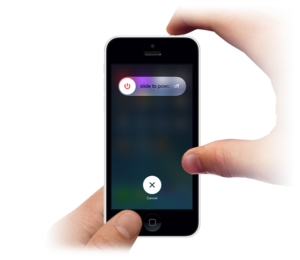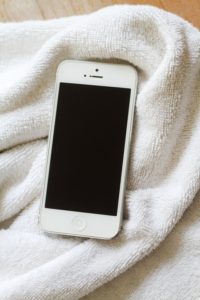Have you ever spilled coffee on your computer, dropped your phone in a puddle in the rain, or jumped into a friends pool forgetting that your iPhone was in your pocket? If you said no to all of the above, pat your self on the back! Just make sure to knock on some wood. For those of you who said yes to the examples given, or for those who experienced a similar situation that resulted in electronics getting wet, you’re not alone.
Liquid damage is a very common instance in daily life and the results are sometimes overwhelming. However there are certain measures to take that can limit the amount of damage in the event your device ever takes a bath. The steps are followed as:
Step 1: Turn off your device immediately.

Step 2: Remove the battery if possible.

Step 3: Dry off excess moisture.

Step 4: Take your device to a reliable local repair shop.
As soon as you get the opportunity, take your device to a local repair shop to have a specialist disassemble the device and remove any remaining liquid internally. The sooner you are able to have a specialist assess the damage, the better. Liquid, if set too long, will build up rust and corrosion lowering your chances of fully recovering your device. Most repair facilities have procedures in place that remove all, if any, corrosion from your device preventing further damage.
Do keep in mind that each liquid incident is different from one another and is dealt on a case by case basis. Unfortunately, there is no guarantee that your device is fully salvageable. In our personal experience, we have recovered smartphones that went through a full wash cycle in a washing machine with little damage, and we have seen phones that had just a few minutes of rain water that could not be saved. It all depends on where the liquid makes its way into the device and what it shorts out along the way.
Truth. Fresh water has a lesser chance of damaging your device.
This would be water from sink tap, rain, lakes, and most commonly, toilets. Being that fresh water doesn’t have compounds like salt or sugar, the water has a much lower chance of corroding internal components in electronics. However this does not mean that you should ignore the urgency of having your device dried and cleaned by a specialist. All types of liquid will still over time create rust and potentially short out internal components if power is running through the device.
Myth: “Rice will dry out a liquid damage device.”
FALSE. Putting your device is a bag of rice will not remove all the moisture out of your device. This is a highly referred to method of liquid damage treatment that has been highly discredited by many repair specialists. Rice will not remove moisture from internal components of your device thus allowing rust to build up, and will clog up aux jacks and charge ports.
If you or someone you know has experienced a situation where a device has been liquid damaged, stop by our shop and let us assess your situation. We just revived a client’s MacBook Air that would not turn on after having spilled cola in the unit. The computer sat for over a month before the client brought it to us. Fortunately we able to get the computer running like new again for only $50.
